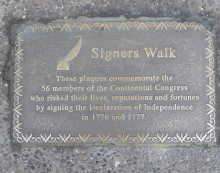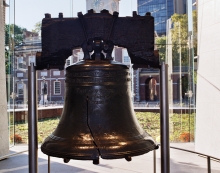The Constitutional Walking Tour starts and ends at the National Constitution Center at 525 Arch Street, Philadelphia, PA 19106. Tours meet at the 3 large stone benches immediately outside the main entrance to the National Constitution Center.
Welcome to The Constitutional Walking Tour of Philadelphia the All-American Tour of America's birthplace. It all started back in 1682 when Philadelphia was founded by William Penn. At that time, Philadelphia was under British rule, and Philadelphia was the largest city in the Colonies. The Constitutional tells the story of the brave men and women who were responsible for creating America. In 1776, The Declaration of Independence was signed in Philadelphia, and in 1787, the Constitution of the United States was signed in Philadelphia. Philadelphia served as the Capital for the United States from 1790 until 1800. Today, Philadelphia is the 5th largest city in the United States, and it is the second largest city on the East Coast with a metropolitan area population of approximately 5.9 million people.








